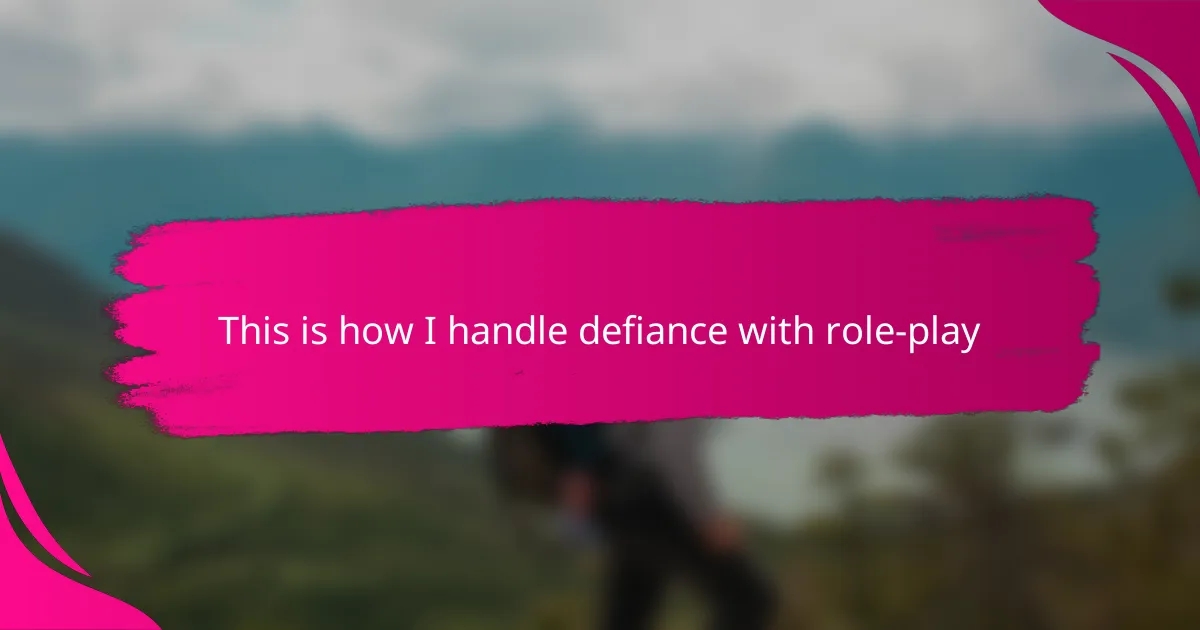Key takeaways
- Defiance in children is often a way for them to assert independence and express unmet needs, rather than simply misbehavior.
- Role-play helps children explore feelings, practice responses, and fosters understanding between parent and child, transforming conflict into collaboration.
- Preparing realistic role-play scenarios and keeping the atmosphere playful allows children to express themselves and develop problem-solving skills.
- Evaluating role-play’s effectiveness involves observing positive changes in communication and emotional responses, indicating growth and connection.
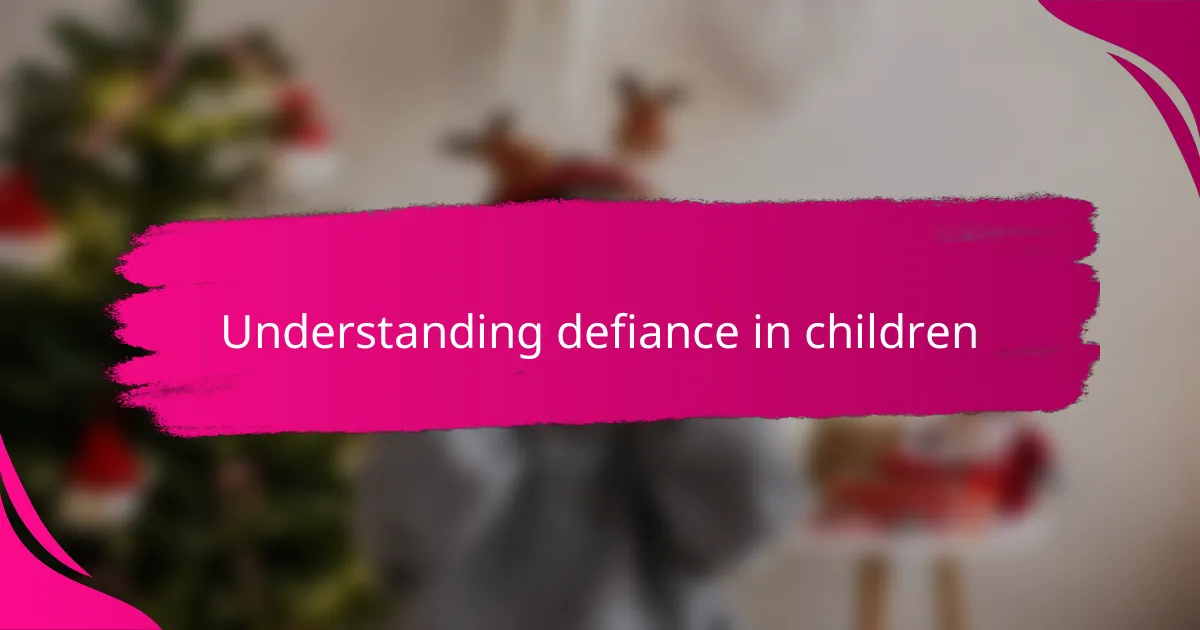
Understanding defiance in children
Defiance in children often feels personal, doesn’t it? From my experience, it’s less about rebellion and more about their need for control in a world that often feels overwhelming. When my own child resisted bedtime, I realized it wasn’t about me, but about their struggle to assert independence.
Have you ever wondered why a simple request turns into a power struggle? I’ve found that defiance is usually a way for children to test boundaries and express unmet needs. Recognizing this helped me shift from frustration to curiosity, asking myself what my child might really be trying to communicate.
It’s important to see defiance as a normal part of development rather than just naughty behavior. This perspective made a big difference in how I responded—more patience, less punishment—because I understood that behind the “no” was often a child seeking connection, respect, or security.
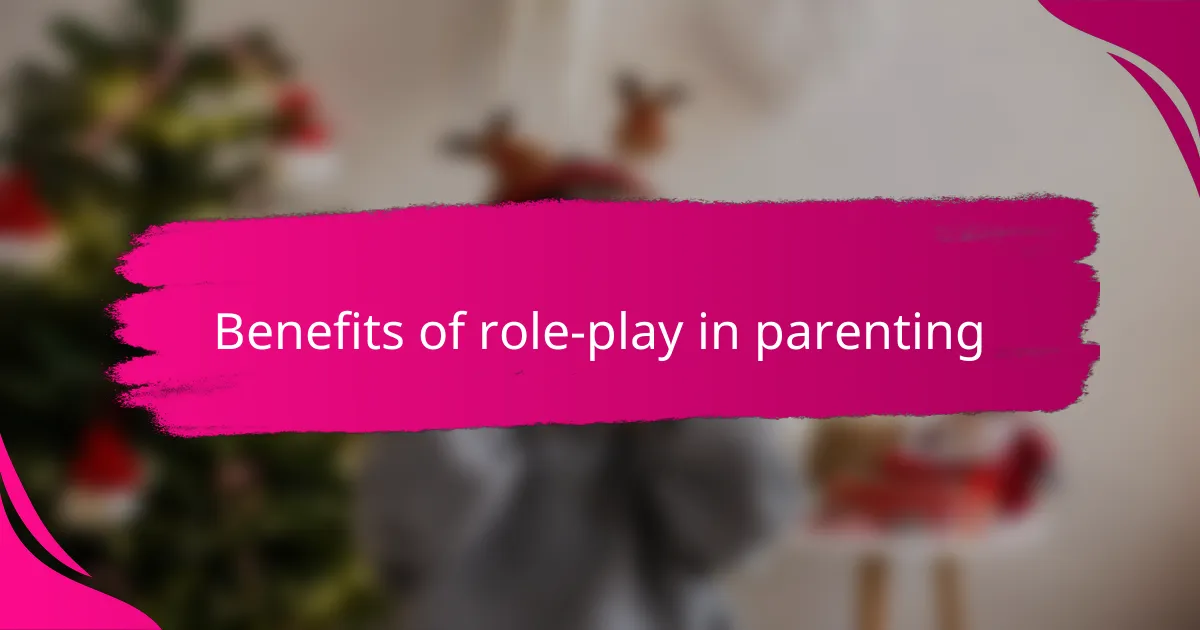
Benefits of role-play in parenting
Role-play has been a game-changer in my journey with defiant moments. When I started acting out scenarios with my child, I noticed how it created a safe space to explore feelings without judgment. Have you ever tried turning a “no” into a playful story? It shifts the energy from conflict to collaboration.
What I love most about role-play is how it empowers children to practice responses before real situations even arise. I remember one afternoon when my child played the role of the “angry self” while I took the “calm parent” part. It was amazing to see their eyes light up, realizing they could choose different ways to handle frustration.
Role-play also deepens understanding between parent and child. Through these imaginative moments, I’ve learned to listen more carefully and my child feels truly heard. It’s like stepping into each other’s shoes, which makes handling defiance less about control and more about connection.
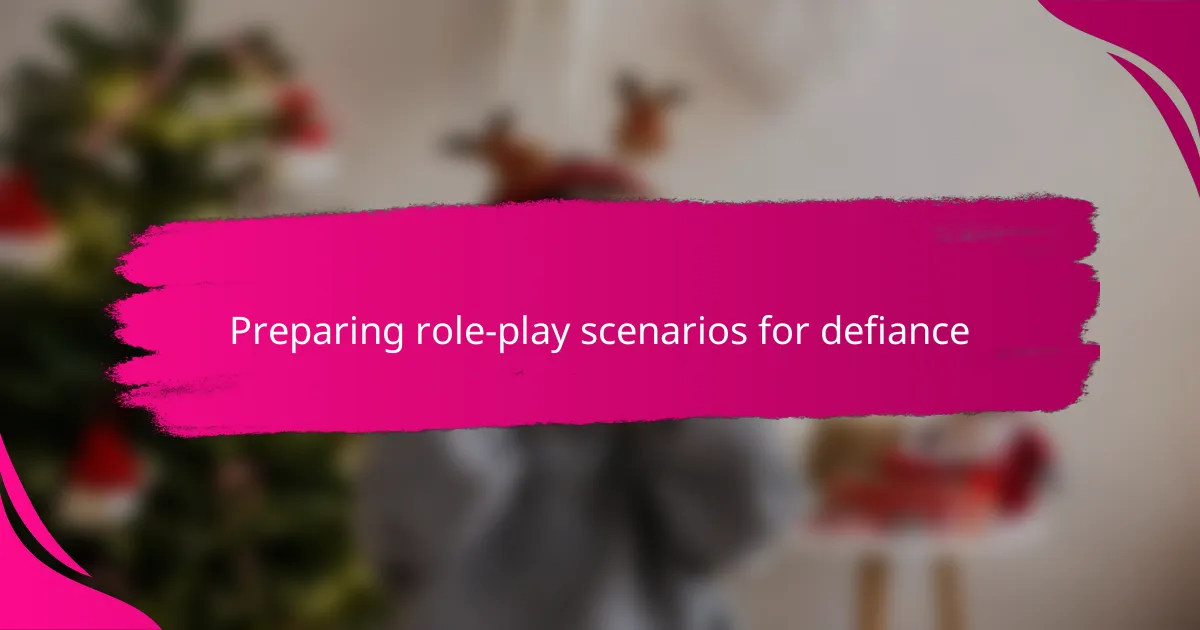
Preparing role-play scenarios for defiance
When I prepare role-play scenarios for defiance, I start by thinking about the exact moments when resistance usually pops up—like refusing to clean up or argue over screen time. Have you ever considered which tiny triggers lead to a full-blown “no” from your child? Pinpointing those helps me create realistic situations that feel familiar yet safe to explore together.
I also like to involve my child in coming up with the scenes. This not only gives them a sense of control but reveals how they see the problem themselves. One time, my kid suggested we act out a “bedtime protest,” and that little insight made me realize bedtime battles were really about feeling rushed, not just defiance.
Then, I focus on keeping the atmosphere light and playful, even when the scenarios tackle tough emotions. I remember jokingly switching roles once—my kid as the “stern parent” and me as the “stubborn kid”—and their laughter broke the tension instantly. That moment showed me how role-play isn’t about fixing behavior instantly but inviting curiosity and openness to new ways of responding.
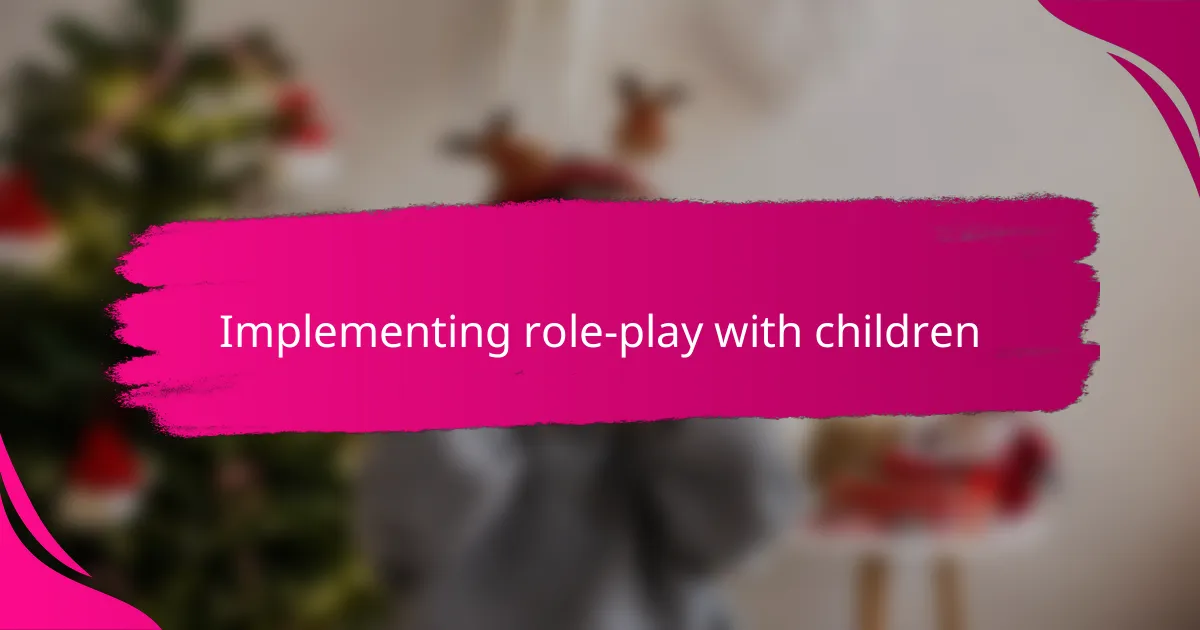
Implementing role-play with children
Starting role-play with my child, I keep the setup simple—just a little space and a handful of props like stuffed animals or puppets. Have you tried using familiar toys to act out challenging moments? It’s surprising how these small changes invite kids to open up and dive into the story without feeling pressured.
I’ve learned it’s crucial to stay patient and flexible during role-play. Sometimes, my child wants to switch roles or change the story mid-way, and instead of shutting that down, I go with the flow. That freedom turns role-play into a fun experiment rather than a lesson, which makes cooperation feel natural, not forced.
Another trick I find helpful is whispering in little “what if” questions while we play, like, “What if the character feels upset but still listens?” This gentle nudging sparks my child’s thinking without sounding like a lecture. Have you noticed how these questions can open up kids’ minds to new possibilities? It’s like planting seeds for empathy and problem-solving right in the moment.
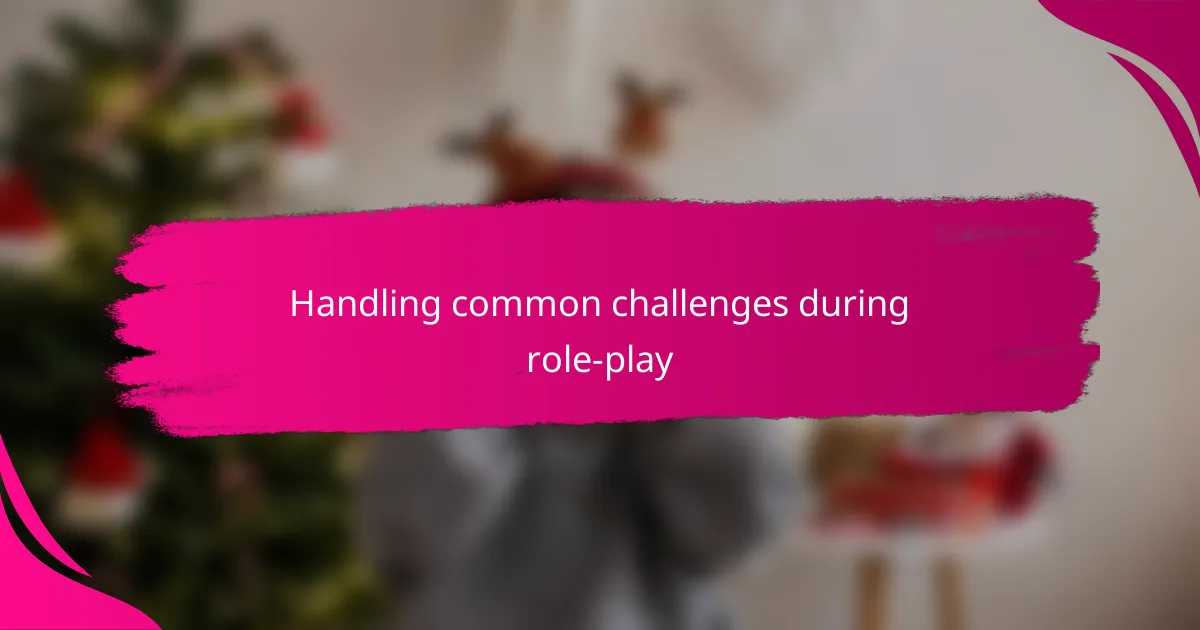
Handling common challenges during role-play
Sometimes during role-play, my child gets frustrated and wants to abandon the scenario altogether. I’ve found that acknowledging their feelings instead of pushing through helps a lot. Have you noticed how simply saying, “I see this is hard right now,” can calm the tension and reopen the door to play?
Another challenge is when the role-play mirrors real conflicts so closely that emotions run high. One time, my child started arguing more intensely than usual, and I realized I needed to pause and take a breath before continuing. Do you think stepping back briefly can turn a moment of defiance into an opportunity for reflection? For me, that pause made all the difference.
Keeping the mood light is essential but not always easy. I try to remind myself that laughter often comes after discomfort, so I don’t rush to fix serious moments too quickly. When my kid laughed after we switched roles, it was like a reset button—showing me that even tough challenges can be softened with a bit of playfulness. Have you experienced a similar breakthrough with humor during role-play?
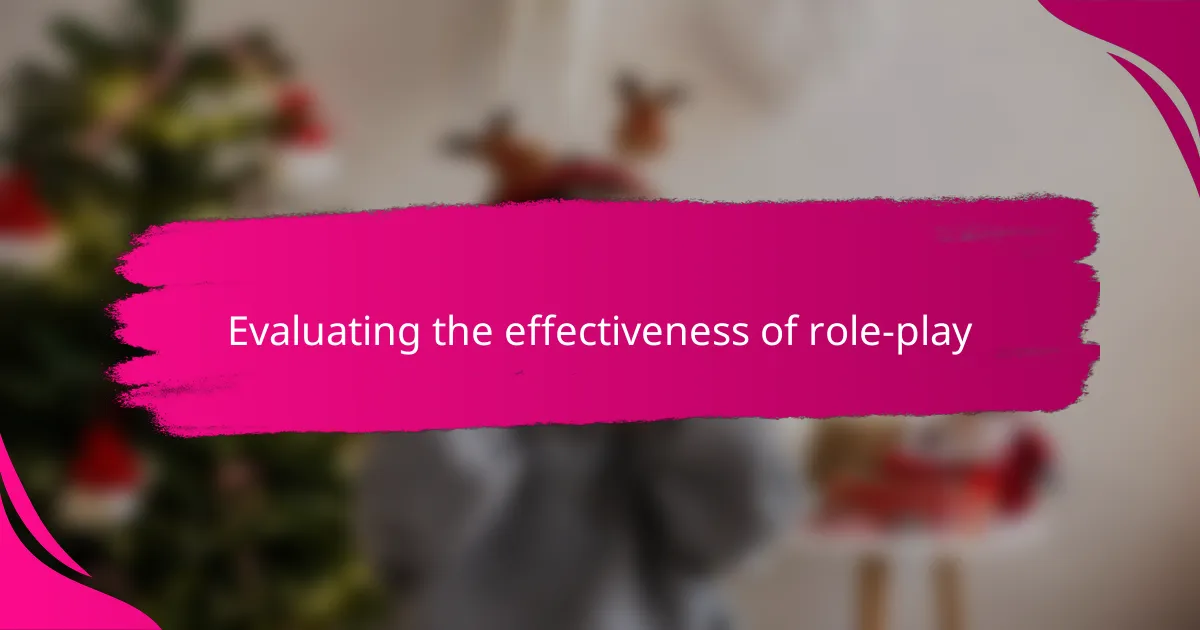
Evaluating the effectiveness of role-play
Evaluating the effectiveness of role-play isn’t always straightforward, but I’ve found that the real test comes in the moments after we pause the game. Have you ever noticed how your child starts using calmer words or suggests solutions they practiced during play? Those little shifts tell me role-play isn’t just pretend—it’s planting seeds of real change.
Sometimes I wonder if my efforts are just a temporary fix, but when my child spontaneously recalls a role-play scenario during a tough moment, I know we’re onto something meaningful. What I’ve learned is that progress might be slow and subtle, but those glimpses of self-regulation and empathy are worth every playful minute spent.
Reflecting on our role-play sessions, I pay close attention to my own feelings too—do I feel more connected, less frustrated? Because when the energy between us lightens, it confirms that role-play is bridging gaps, not just managing behavior. Have you experienced that kind of emotional relief after role-playing with your child? For me, it’s a sign that we’re growing together, step by playful step.
